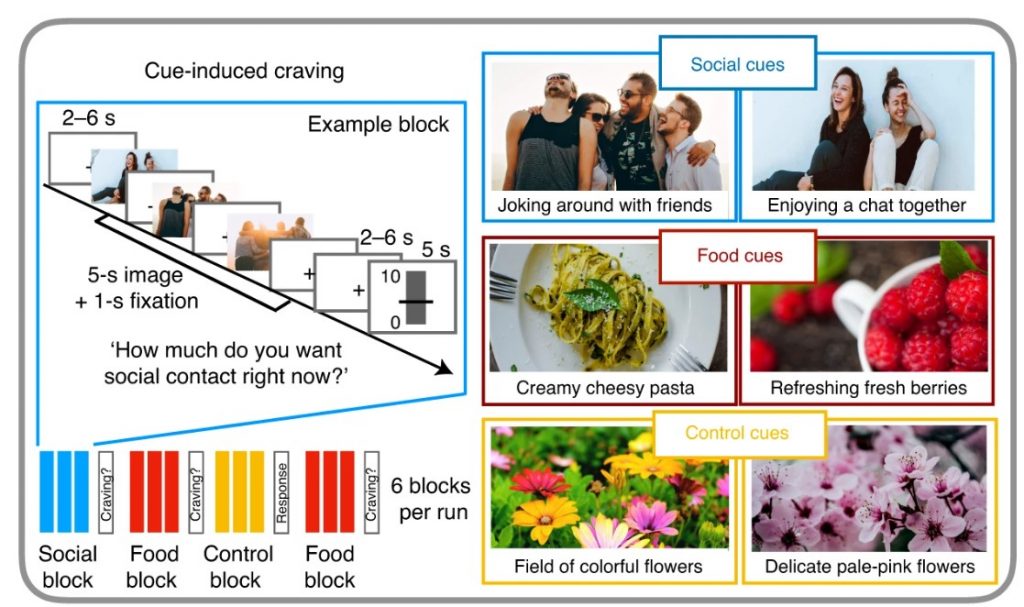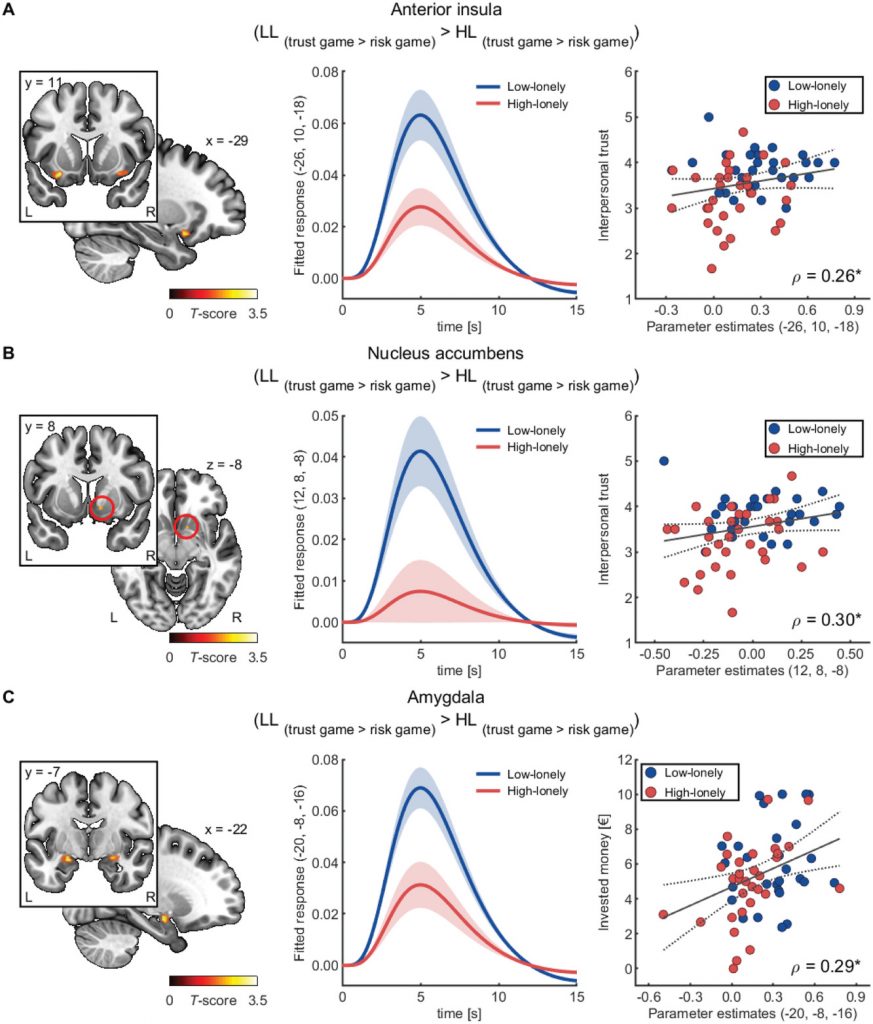Human evolution is largely determined by selection based on interpersonal communication. Social
Not surprisingly, the lack of sufficientsocial activity can lead to significant physical and psychological problems. The key problem is the experience of "loneliness". At the same time, researchers share the concepts of social isolation (objective loneliness) and subjective dissatisfaction with social ties (subjective loneliness). A person may have few social contacts, but at the same time he may not feel lonely, and vice versa.
Subjective loneliness is an emotionalthe stress that people experience when the innate need for intimacy and companionship is left unsatisfied, when real relationships do not meet expectations. And while there is hardly a person who does not have to deal with this feeling at one time or another, when loneliness becomes chronic or severe, the long-term consequences can be very harmful to health.
Loneliness is like hunger for people
In a 2020 study,neuroscientists at the Massachusetts Institute of Technology and the Salk Institute for Biological Research have studied how neural responses change with a lack of food and social interactions. The results showed that loneliness induces neural responses in the brain similar to those associated with hunger.
During the experiment, 40 participants during10 hours of starvation or were subjected to complete social isolation. In the second part of the study, participants were locked in a room, they were not allowed to use phones, only a computer was left in the room for emergency communication with the researchers.
After completing each stage, scientists dideach participant a functional magnetic resonance imaging (fMRI) scan to measure brain activity and compared with the participants' baseline fMRI scans. To avoid social contact, participants made their own way to the machine and did not see or interact with the researchers until the end of the scan.
 Various pictures that were shown to the participants to test the response to the fMRI after the session. Image: Livia Tomova et al., Nature Neuroscience
Various pictures that were shown to the participants to test the response to the fMRI after the session. Image: Livia Tomova et al., Nature Neuroscience
The analysis showed that the areas of the midbrain,associated with hunger and drug cravings were also activated in the case of social isolation. However, after complete isolation, the sight of people having fun together activates the same area of the brain that lights up when a hungry person sees an image of a plate of pasta.
People forced to be in isolationcrave social interactions in the same way that a hungry person craves food. Our finding is consistent with the intuition that positive social interaction is a basic human need and acute loneliness is an aversive state that encourages people to replace what is lacking, like hunger.
Rebecca Sachs, MIT professor and study co-author
Vicious circle of loneliness
A series of behavioral studies and fMRI analyzes alsoshows that loneliness increases attention to negative social stimuli (e.g., social threats) and the need for self-preservation.
For example, in 2009 scientists from the ChicagoUniversities demonstrated how social perception functions differently in single and not lonely young people. The researchers showed participants images that differed in their emotional (pleasant and unpleasant) and social (showing people and objects) content. All participants underwent fMRI during the viewing.
The scan showed that when viewingOf positive images in lonely people, the ventral striatal region (part of the reward system responsible for positive motivation) was activated less if the picture depicted people rather than objects. At the same time, when viewing negative pictures with images of people, the visual cortex was more actively activated in lonely people. This indicates that the attention of these people is more attracted to the suffering of others, scientists believe.
In a meta-analysis combining a series of similarexperiments, the researchers concluded that due to distorted perceptions, lonely people become hyper-vigilant to potential threats. As a result, they pay more attention to negative situations, ignore the positive aspects of the interaction, and fall into a vicious cycle of loneliness.
Psychologists from Israel came to similar conclusions.In 2020, they surveyed over 7,500 older adults to understand the relationship between hostile behavior and loneliness. The analysis found that lonelier people tend to be more likely to feel hurt or abused by loved ones, refuse to interact with them, and show “cynical hostility.”
This is what researchers call the perception thatothers cannot be trusted and that they are the source of problems. Researchers believe that hostility is a defense mechanism that lonely people use to avoid being faced with new denials of help and sympathy. But, one way or another, such behavior works in two directions: hostility further repels people and reduces communication, allowing lonely people to be convinced of their rightness.
Nobody can be trusted
To understand how biochemistry and brain activityaffects the formation of such hostile attitudes, researchers from Germany and Israel conducted a game experiment. They selected from a large sample of 42 participants with high levels of loneliness and a control group of the same size of those who did not feel consistently lonely. At the same time, none of the participants in either the main or control groups were diagnosed with serious mental disorders.
Participants in the study were asked to play the game:they were given game coins and asked if they wanted to keep them all for themselves or share them with other participants. The amount that was transferred to others was tripled by the organizers, as a result, the next participant could return part of the money to the “donor”.
Lonely participants shared with others less frequently andless than their peers in the control group. However, fMRI scans showed that lonely participants had much lower activity in the amygdala, an area of the brain associated with trust, when making decisions.
The researchers also analyzed samplesblood and saliva to measure oxytocin levels. This hormone plays a role in bonding and bonding with others, among other things. As expected by the researchers, it was lower in lonely people and did not increase during communication with other participants in the experiment.
 Differences in the work of certain areas of the brain in people with high and low indicators of loneliness. Image: Jana Lieberz et al., Advanced Science
Differences in the work of certain areas of the brain in people with high and low indicators of loneliness. Image: Jana Lieberz et al., Advanced Science
Loneliness shrinks the brain?
Not only social interactions, but alsocognition and even brain size suffer from loneliness. In 2019, a group of German scientists presented the results of observations of nine members of a polar expedition in Antarctica. They all spent about 14 months on the southernmost mainland.
Eight members of the expedition, who worked onStation Neumeier III agreed to undergo brain scans before and after their mission, and to monitor brain chemistry and cognitive function during their stay. A ninth crew member also participated in the study, but was unable to undergo a brain scan due to medical reasons.
The analysis showed that compared with the controldata during the experiment, the participants had a decrease in the volume of the prefrontal cortex of the brain. This is the area that is responsible for decision making and problem solving. At the same time, the volume of the dentate gyrus decreased by an average of 7%. In addition, they had reduced levels of the BDNF protein, a brain-derived neurotrophic factor responsible for the growth and development of neurons.
The sample of this study is limited and it is unclearHow much of these changes were related to social isolation and how much was determined by other factors (for example, the harsh environment of the Antarctic station). But the results are indirectly consistent with data from other observations.
For example, in a study that tookmore than 11,000 participants, the researchers found that those who reported high levels of social loneliness experienced above-average cognitive and memory declines. And another study showed that older, lonely people often have atrophy in parts of the brain, including the thalamus, which processes emotions, and the hippocampus, the memory center.
How to deal with loneliness?
Charitable and government organizations indifferent fears are developing programs that are aimed at helping people cope with loneliness. The traditional approach suggests that it is necessary to stimulate social contacts between people (there are especially many such programs for older people), to involve them in the work of interest clubs and public spaces. But neuroscience and research show that coping with loneliness isn't always easy.
Low levels of trust, "cynical hostility" andother changes lead to the fact that lonely people, even in the conditions of an artificially created network of contacts, remained aloof, preferred to stand away from strangers and, as a result, still felt lonely.
But research shows that the solutionexists. For example, cognitive therapy can be effective in reducing loneliness by teaching people to recognize how their behavior and thought patterns prevent them from making the connections they value and how to learn to trust others.
Another idea is to develop synchronicity inthe process of communication. It is known that one of the keys to how much people trust each other is how closely their behavior and reactions match at any given time. The analysis showed that in lonely people such synchronicity is often delayed and this prevents them from establishing connections with others. Learning how to overcome this is another possible avenue for therapy.

A transient feeling of loneliness is an inevitable and perhaps even useful part of human life, but when this feeling becomes chronic, it can become dangerous to health and life.
Read more:
Named a vitamin that protects the brain from dementia
Named a type of insomnia that reduces the risk of dementia. But why is unknown.
It turned out which men are the most fertile: their sperm is 50% better than the rest